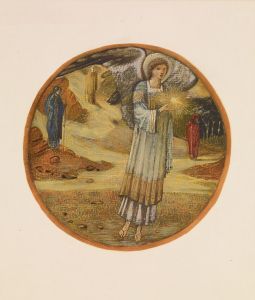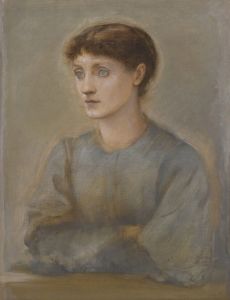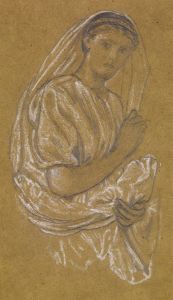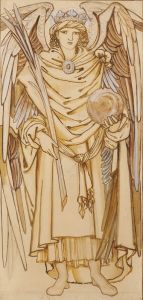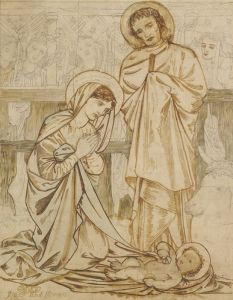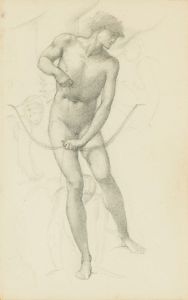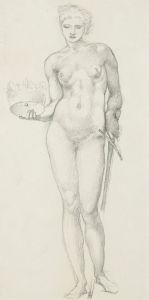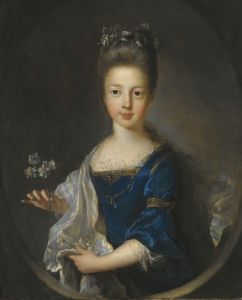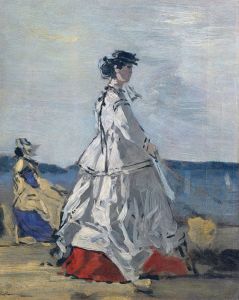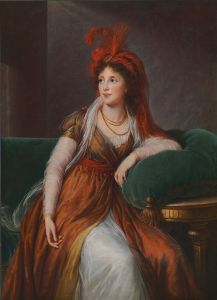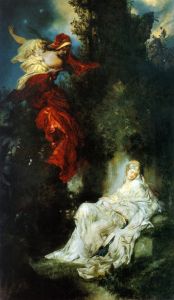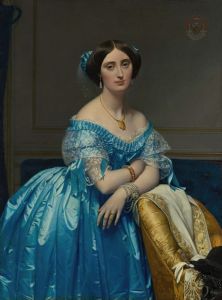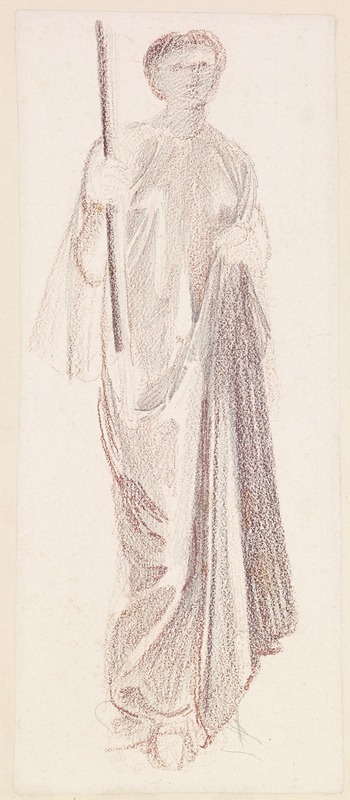
St George Series – Study of Female Attendant for ‘The Princess led to the Dragon’
A hand-painted replica of Sir Edward Coley Burne-Jones’s masterpiece St George Series – Study of Female Attendant for ‘The Princess led to the Dragon’, meticulously crafted by professional artists to capture the true essence of the original. Each piece is created with museum-quality canvas and rare mineral pigments, carefully painted by experienced artists with delicate brushstrokes and rich, layered colors to perfectly recreate the texture of the original artwork. Unlike machine-printed reproductions, this hand-painted version brings the painting to life, infused with the artist’s emotions and skill in every stroke. Whether for personal collection or home decoration, it instantly elevates the artistic atmosphere of any space.
Sir Edward Coley Burne-Jones, a prominent figure in the Pre-Raphaelite movement, created the artwork St George Series – Study of Female Attendant for ‘The Princess led to the Dragon’ as part of his larger St George and the Dragon series. This series, inspired by the legend of Saint George, reflects Burne-Jones’s fascination with medieval themes, chivalric tales, and the interplay of myth and morality. The specific study in question focuses on a female attendant, a preparatory work for the larger composition titled The Princess led to the Dragon.
The St George and the Dragon series, completed between 1866 and 1893, was commissioned by the British collector Myles Birket Foster. It consists of several panels that narrate the story of Saint George, the Christian martyr and legendary dragon-slayer. Burne-Jones’s interpretation of the tale emphasizes the emotional and psychological dimensions of the characters, rather than solely focusing on the heroic action. The series is notable for its intricate detail, harmonious compositions, and the artist’s characteristic use of muted, jewel-like colors.
The study of the female attendant demonstrates Burne-Jones’s meticulous approach to preparatory work. He often created numerous sketches and studies to refine the poses, expressions, and drapery of his figures before incorporating them into the final composition. This particular study showcases his skill in capturing the grace and solemnity of the attendant, who plays a supporting role in the narrative. The figure is depicted with a sense of quiet dignity, her posture and attire reflecting the medieval aesthetic that Burne-Jones admired and sought to emulate.
Burne-Jones’s work was deeply influenced by his association with the Pre-Raphaelite Brotherhood, a group of artists and writers who sought to reject the academic conventions of their time and revive the detail, color, and complexity of early Renaissance art. His collaboration with William Morris, a close friend and fellow artist, also shaped his artistic vision, particularly in terms of design and decorative elements.
The St George Series is housed in various collections, with individual panels and studies dispersed among museums and private collectors. Burne-Jones’s studies, such as the Study of Female Attendant for ‘The Princess led to the Dragon’, are valued not only for their artistic merit but also for the insight they provide into his creative process. These works highlight his dedication to craftsmanship and his ability to imbue even preparatory sketches with a sense of narrative and emotion.





